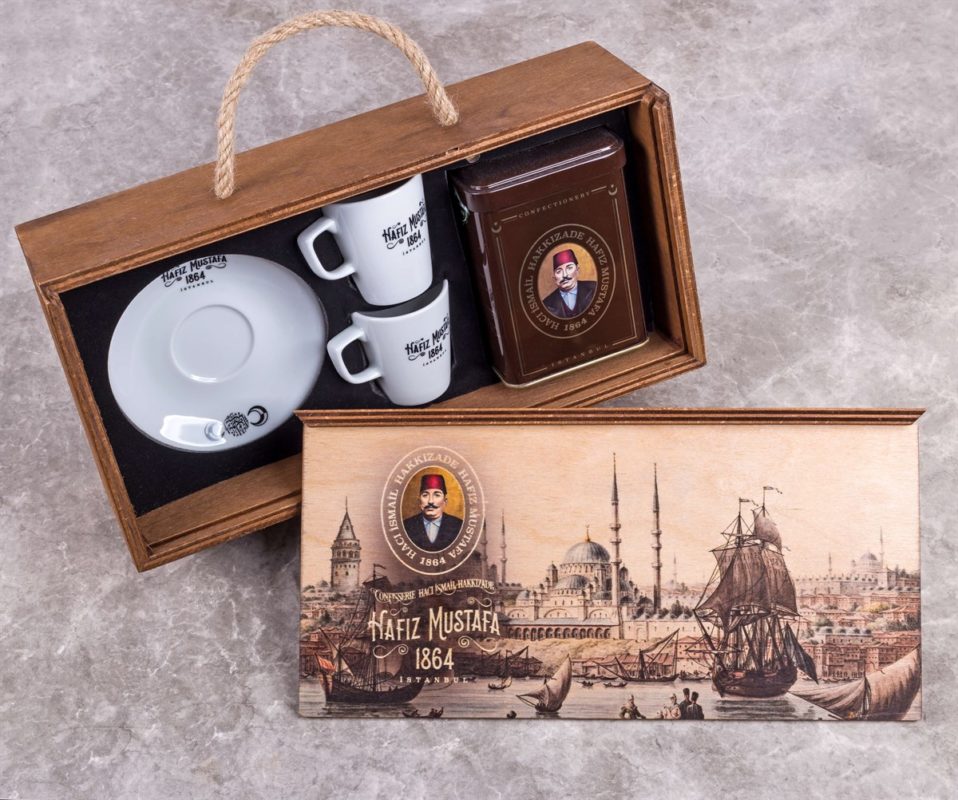Turkish Beverages
Turkish Coffee
Turkish Coffee is the name of the method of coffee preparation and cooking discovered by the Turks. It has a unique identity and tradition with its special taste, foam, smell, cooking and treats. The beverage, which was previously obtained by boiling coffee fruit in the Arabian Peninsula, has attained the real coffee taste and unique aroma with this brand new method of preparation and brewing. Europe that met coffee with the Turks; For many years, he prepared and consumed coffee as Turkish coffee with this method.

HISTORY OF TURKISH COFFEE
In 1517, Yemen Governor Özdemir Pasha brought coffee, whose taste he admired, to Istanbul.
Thanks to the brand new method of preparation found by the Turks, coffee was cooked in jars and pots and named Turkish Coffee. Thanks to the coffee houses that were opened in Tahtakale and spread rapidly throughout the city, the people became acquainted with coffee. Coffeehouses and coffee culture, where books and beautiful writings are read at all hours of the day, chess and backgammon are played, poetry and literary conversations are held, and coffee culture left their mark on the social life of the period. Coffee, which took its place in the palace kitchen and in the houses, started to be consumed in large quantities. After the raw coffee beans were roasted in pans, they were pounded in mortars and then cooked in pots and served with great care to the most prestigious friends. surrounded the world.

Turkish Coffee – Tools
The traditional preparation process specific to Turkish Coffee basically; It consists of roasting, cooling, grinding, cooking and catering stages. Almost all of the traditional vehicles used in these stages were discontinued over time due to the conditions of the day; They have taken their places in museums, collections and antique shops. According to the order of use, we can define these tools as follows: In the roasting process, two types of roaster were used, namely pan and drum. The pans were hand made from hot iron using the hammering technique, rarely terracotta ones were found. Some of the long-handled roasters had collapsible handles. Some large pans were manufactured with wheels to be easily put on the fire. Some also had roasting spoons attached to them with chains. The roasting process was done on a stove or a barbecue. Drum type roasters, manufactured from thin sheet metal, consisted of a manually turned cylindrical body mounted on a small rectangular brazier.
Roasted coffee was transferred to the cooler and cooled.
It was beaten in coffee, mortars and pestles.
It would be cooled by transferring to the cooler. It was beaten in coffee, mortars and pestles. The roasted coffee beans were transferred to the cooler, which was hand-carved from the tree, with a coffee discharge chute. Unique coolers on which patterns are embroidered with the scraping technique constitute the best examples of Turkish woodworking. Coffee beans ready to be ground, in other words, were ground in mortars or mortars or ground in mills. Dibek; It was produced from wood, marble or stone material by hand chipping technique, and mortar was produced as bronze casting.
Another tool used to grind coffee was a hand grinder, as well as wooden grinders to grind coffee.
The grinding process was done with a pestle or a pestle. Two types of mills were used as hand mills and ground mills. Generally, there were hand mills made of rice, some of which were wood. Ground mills, on the other hand, were made of both wood and rice. However, the mechanical parts of all of them were iron.
After the coffee was ground, it was stored in the coffee box.
The handle of some pots used for cooking coffee could be folded.
The old-fashioned coffee, known as bitter coffee (mırra), was produced by boiling very dark roasted beans in jars for a long time, and was drunk without sugar in one sip.
Turkish Coffee; It is made by boiling medium roasted and finely ground coffee with or without sugar in water for a short time, as it is today. It is also desirable to have foamy. The cooking process used to be made with tinned coffee jars made of copper or brass. Later, copper or brass pots that we still use today began to be used.
The envelopes of the enveloped cups of the period were tombac, gold plated on copper. Coffee presentation is as important as cooking. Coffee cups have always been one of the most stylish kitchen accessories.
The offering of Turkish Coffee has always been an indicator of love, respect and value given to guests in our culture. The catering was made by the girls called the coffeemaker in a ceremonial atmosphere with special coffee sets. Coffee set; It consisted of a coffee cover, coffee tray, cup envelopes, cups, plates, and also a service jug for serving coffee hot. The most favorable of the trays, envelopes and plates were tombac, that is, the ones covered with gold on copper. Later, silver and copper were also used. These pieces, some with monograms, some with cut, some with relief patterns; They are the best examples of the high level that Turkish metalworking has reached.
Coffee Fortune Telling
Love, success, money, fortune: reading coffee grounds is a tradition as old as the history of coffee. Coffee fortune-telling, born with Turkish Coffee, is an integral part of coffee pleasure and conversation. This ritual, which the Turks presented to Europe at the end of the 17th century, became very fashionable first in Paris, then in Austria, Hungary and Germany. After the coffees are drunk, the coffee cup is closed on the plate. The person whose fortune will be looked for says “Anyway, let it be my fortune”. The person looking at the fortune interprets the horoscope according to the shapes of the grounds after the cup cools down. This is usually done in order to give good news to the person whose fortune-telling is being read and to make them look forward with hope. The shapes that the grounds leave on the coffee cup and saucer have various meanings.


